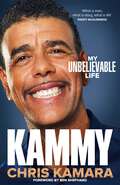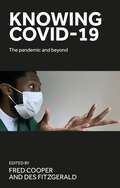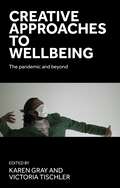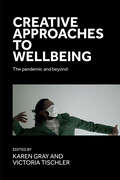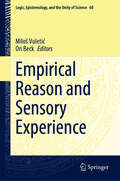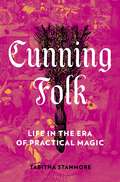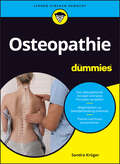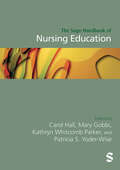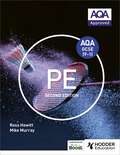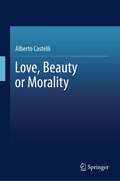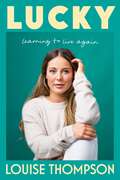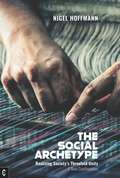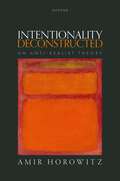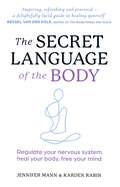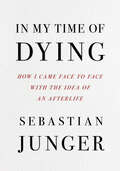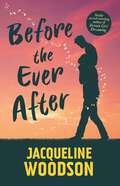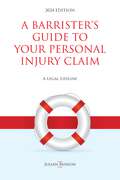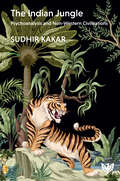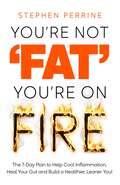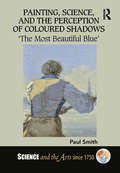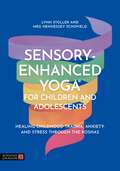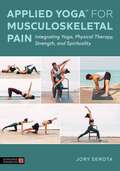- Table View
- List View
Kammy: The Funny and Moving Autobiography by the Broadcasting Legend
by Chris KamaraForeword by Ben Shephard‘Everyone loves Kammy . . . Full of humour and endless blunders’ – The Times'What a man, what a life, what a story, and what a great read' – Paddy McGuinnessPresenter, commentator, (sometimes masked) singer, footballer, manager and campaigner, Kammy has done it all. His irrepressible enthusiasm – and a couple of legendary gaffes on Sky Sports – have seen him become broadcasting royalty.Now Kammy reveals all in this funny and moving autobiography. What happens when you double cross José Mourinho? What it’s like to play with Vinnie Jones? Who comes off better: Kammy or a rampaging gorilla? How did Kammy end up releasing his own top-ten record? What's the real story behind his infamous line, 'I don't know, Jeff!'?But despite the crazy tales, it hasn't all been plain sailing. Kammy had a tough upbringing, faced racism during his playing career and has, in recent years, dealt with a rare brain condition – apraxia – that has affected his speech and seen him say goodbye to Sky Sports. Relating his battle against the condition, Kammy shows how he’s met every challenge with courage, determination and his infectious smile.Packed with hilarious stories and featuring a cast of famous names, from Elton John to Channing Tatum, this is a book about friendship, courage and why it's always important to have a good laugh.'A talented (and daft) lad from the Boro who has entertained the nation for decades, on and off the pitch. So get the tissues ready – this book will make you laugh and cry in equal measure' – Steph McGovern
Knowing COVID-19: The pandemic and beyond (The pandemic and beyond)
by Fred Cooper and Des FitzgeraldKnowing COVID-19 demonstrates how researchers in the humanities shone a light on some of the many hidden problems of COVID-19, in the very depths of the pandemic crisis. Drawing on eight COVID-19 research projects, the volume shows how humanities researchers, alongside colleagues in the clinical and life sciences, addressed some of the major critical unknowns about this new infectious disease – from the effects of racism to the risks of deploying shame; from how to design an effective instructional leaflet to how to communicate effectively to bus passengers. Across eight novel case studies, the book showcases how humanities research during a pandemic is not only about interpreting the crisis when it has safely passed, but how it can play a vital, collaborative and instrumental role as events are still unfolding.
Creative approaches to wellbeing: The pandemic and beyond (The pandemic and beyond)
by Victoria Tischler Karen GrayA compilation of case studies illustrating how arts, culture and other community assets were used by individuals and communities to cope and develop resilience during the Covid-19 pandemic, demonstrating valuable lessons that might help us develop resilience in similar future crises. Threaded through all the contributions, readers will discover a focus on the experiences and voices of those marginalised during the pandemic, because of their lived experiences of structural inequalities, or due to mental or physical ill-health or age. These are difficult and complex topics, and there are vital lessons here for policy and for practice in the arts and for provision of health and care.
Creative approaches to wellbeing: The pandemic and beyond (The pandemic and beyond)
by Karen Gray and Victoria TischlerA compilation of case studies illustrating how arts, culture and other community assets were used by individuals and communities to cope and develop resilience during the Covid-19 pandemic, demonstrating valuable lessons that might help us develop resilience in similar future crises. Threaded through all the contributions, readers will discover a focus on the experiences and voices of those marginalised during the pandemic, because of their lived experiences of structural inequalities, or due to mental or physical ill-health or age. These are difficult and complex topics, and there are vital lessons here for policy and for practice in the arts and for provision of health and care.
Knowing COVID-19: The pandemic and beyond (The pandemic and beyond)
by Des Fitzgerald Fred CooperKnowing COVID-19 demonstrates how researchers in the humanities shone a light on some of the many hidden problems of COVID-19, in the very depths of the pandemic crisis. Drawing on eight COVID-19 research projects, the volume shows how humanities researchers, alongside colleagues in the clinical and life sciences, addressed some of the major critical unknowns about this new infectious disease – from the effects of racism to the risks of deploying shame; from how to design an effective instructional leaflet to how to communicate effectively to bus passengers. Across eight novel case studies, the book showcases how humanities research during a pandemic is not only about interpreting the crisis when it has safely passed, but how it can play a vital, collaborative and instrumental role as events are still unfolding.
Empirical Reason and Sensory Experience (Logic, Epistemology, and the Unity of Science #60)
by Miloš Vuletić Ori BeckThe volume offers a lively and wide-ranging debate on the major questions of perceptual epistemology, including how perceptual experiences can bestow positive epistemic standing to empirical judgments and beliefs; the relative epistemic import of veridical and non-veridical perceptual experiences; the relation between experience and knowledge; and the nature of experience in view of its epistemic linkages to discursive contents. The volume is centered around five cutting-edge essays by leading authors in these areas—Anil Gupta, Andrea Kern, Christopher Peacocke, Susanna Schellenberg and Crispin Wright—along with no less than thirty contributions scrutinizing and critically discussing the essays, prompting detailed rejoinders from the lead authors. The volume closes with an extensive debate between Annalisa Coliva, Gupta and Wright. Taken as a whole, the volume covers much ground in epistemology of perception and displays a variety of approaches and perspectives through fruitful and accessible exchanges. It will be of interest not only to researchers working in perceptual epistemology but also to students new to the subject.
Cunning Folk: Life in the Era of Practical Magic
by Tabitha StanmoreA vibrant look at an unsettled and strangely familiar time that overturns our assumptions about the history of magic.Imagine: it's the year 1600 and you've lost your precious silver spoons, or maybe they've been stolen. Perhaps your child has a fever. Or you're facing a trial. Maybe you're looking for love or escaping a husband. What do you do? In medieval and early modern Europe, your first port of call might have been cunning folk: practitioners of “service magic.” Neither feared (like witches), nor venerated (like saints), they were essential to daily life. For people across ages, genders, and social ranks, practical magic was a cherished resource for navigating life's many challenges.In historian Tabitha Stanmore's beguiling account, we meet lovelorn widows, dissolute nobles, selfless healers, and renegade monks. We listen in on Queen Elizabeth I's astrology readings and track treasure hunters trying to unearth buried gold without upsetting the fairies that guard it. Much like us, premodern people lived in a bewildering world, buffeted by forces beyond their control. As Stanmore reveals, their faith in magic has much to teach about how to accommodate the irrational in our allegedly enlightened lives today. Charming in every sense, Cunning Folk is at once an immersive reconstruction of a bygone era and a thought-provoking commentary on the beauty and bafflement of being human.
Osteopathie für Dummies (Für Dummies)
by Sandra KrugerBei vielen verschiedenen Arten von Schmerzen aber auch bei Beschwerden im Magen-Darm-Trakt kann Ihnen Osteopathie helfen. Sandra Krüger erklärt Ihnen, was Osteopathie überhaupt ist und unterstützt Sie dabei, den richtigen Osteopathen zu finden. Außerdem zeigt Ihnen die Autorin, wie Sie selbst osteopathische Übungen vornehmen können und so Ihr Wohlbefinden in die eigenen Hände nehmen. Dabei erläutert Sie auch, wie Sie mit diagnostischen Selbsttests herausfinden, was überhaupt zu tun ist. So ist dieses Buch Ihnen eine doppelte Hilfe, wenn Sie sich dazu entscheiden, auch die Osteopathie als Heilmethode zu nutzen.
The Sage Handbook of Nursing Education
In the past several years, a revival of research devoted to nursing education has emerged. This emergence has changed the way many educators engage in their practice of working with learners; and learners have come to expect that they will have a rich learning experience designed to develop new (or enhance prior) knowledge, skills, and attitudes. The SAGE Handbook of Nursing Education provides a detailed map of the current discipline, with a carefully selected team of international contributors offering the latest thinking about education in nursing across key areas. This handbook will be a key resource for academic educators, as well as graduate and postgraduate learners.
AQA GCSE (9-1) PE Second Edition
by Ross Howitt Mike MurrayWritten by leading PE specialists, students will be guided through the AQA GCSE (9-1) PE specification topic by topic and have opportunity to improve their understanding, analysis, evaluation and application skills through exam-style questions and detailed insight to the NEA.Approved by AQA, this Student Book:- develops understanding with thorough coverage of topics and contains summaries, diagrams and key questions to direct thinking and aid revision- provides clear definitions of key terms, technical vocabulary and concepts, including those that students have struggled the most- builds sound knowledge and analysis, evaluation and application skills through detailed support and exam-style questions- stretches, challenges and encourages independent thinking and a deeper understanding through activities, stimulus material and suggestions for further reading.
Love, Beauty or Morality
by Alberto CastelliThis book is moved by two main questions. Is Love a matter of beauty or mortality? In other words, is love an ethical ideal? Also, modernity understood as the age of mechanical reproduction, has shaped not simply our cities but our very same way of feeling. How has our conception of love changed, if it has, in the past two centuries? This book is to address these questions. It is not to trace the evolution of the idea of love in Western culture, from Plato to the present day. It aims to bring to the surface different shades of love lingering at the heart of Western culture to rehabilitate the myth of love to its original credibility. Our confused civilization has split love into sensual and moral aspects but to be aware of it is perhaps to defeat a dilemma that seems so unnatural. This book is about how we make sense of our lives through love and how nineteenth and twentieth-century literature records it.
Lucky: Learning to live again
by Louise ThompsonHow do you learn to live again when you've danced with death?Louise’s road to having a baby was far from easy, suffering a heartbreaking miscarriage during her first pregnancy and being caught in a terrifying house fire in her second. But her troubles were far from over when she gave birth. During an emergency c-section, she had severe complications and fought for her life over a number of days, whilst her son was taken into NICU. This terrifying experience impacted on Louise's mental health in a way that completely changed her life, as she has battled to come to terms with what happened to her, whilst also becoming a mother.As Louise has rebuilt herself step by step, she has reflected back on her past – from her childhood and dynamics with her family, to her struggles with alcohol and toxic relationships, as well as the rollercoaster years of her time on Made in Chelsea. Louise’s experience has changed the way she sees the world and redefined what's important to her. Although it has been a challenging journey, she is determined to come out more alive than ever. Louise’s powerful story, told with raw honesty, shows the incredible human ability to overcome anything, no matter what life throws at you.
The Social Archetype: Realizing Society's Threefold Unity, A New Goetheanism
by Nigel HoffmannWe live in a time of multiple challenges to our rights and freedoms – not only in authoritarian regimes but also in liberal democracies around the globe. As the storm clouds of crisis gather, Rudolf Steiner's social vision – now a century old – offers a clear way forward. Radical in his time and still so today, Steiner's 'social threefolding' is not conceived as a logical 'system'. Rather, his picture of society as a living threefold unity, as a social 'organism', is an artistic insight that needs to be grasped imaginatively. To understand its three dimensions – the economic, the political-legal and cultural-spiritual spheres – and how they relate to each other, is to experience them inwardly. This requires a living, creative thinking that is able to enter the archetypal forces behind the concepts: a modern-day, truly Goethean approach to the social sciences. In an illuminating study, Hoffmann's dynamic presentation enables us to develop precisely such an artistic–imaginative understanding of the threefold social organism. He achieves this through clear descriptions of its principles and practical governance, whilst offering wise advice regarding the adaptation of education – at school and tertiary levels – for a threefold society.
Intentionality Deconstructed: An Anti-Realist Theory
by Amir HorowitzIntentionality Deconstructed argues for the view that no concrete entity - mental, linguistic, or any other - can possess intentional content. Nothing can be about anything. The concept of intentionality is flawed, and so content ascriptions cannot be "absolutely" true or false - they lack truth conditions. Nonetheless, content ascriptions have truth conditions and can be true (or possess a related epistemic merit) relative to practices of content ascription, so that different practices may imply different (not real but practice-dependent) intentional objects for the same token mental state. The suggested view does not deny the existence of those mental states standardly considered intentional, notably the so-called propositional attitudes; it affirms it. That is, support is provided for the existence of those states with the properties usually attributed to them, but absent intentional properties. Specifically, it is argued that the so-called propositional attitudes possess logico-syntactic properties, whose postulation plays an important role in addressing the challenge of reconciling intentional anti-realism with beliefs being true or having alternative epistemic merits, the argument from the predictive and explanatory success of content ascription for intentional realism, and the cognitive suicide objection to views that deny intentionality. As part of the rejection of this final objection, intentional anti-realism is presented as a radical view, which claims "Nothing can possess intentional content" but not that nothing can possess intentional content, and it is argued that this is a legitimate characteristic of radical philosophy. In spite of rejecting the "claim that" talk, intentional anti-realism gives clear sense to its dispute with its rivals as well as to its own superiority. Various arguments for intentional anti-realism are presented. One argument rejects all possible accounts of intentionality, namely primitivism, intrinsic reductionism - the prominent example of which is the phenomenal intentionality thesis - and extrinsic reductionism (that is, reductive naturalistic accounts). According to another argument, since intentional properties are shown to be dispensable for all possibly relevant purposes, and no sound arguments support the claim that they ever are instantiated, the application of Ockham's razor shows that no such properties ever are instantiated, and another step shows that neither can they be.
Intentionality Deconstructed: An Anti-Realist Theory
by Amir HorowitzIntentionality Deconstructed argues for the view that no concrete entity - mental, linguistic, or any other - can possess intentional content. Nothing can be about anything. The concept of intentionality is flawed, and so content ascriptions cannot be "absolutely" true or false - they lack truth conditions. Nonetheless, content ascriptions have truth conditions and can be true (or possess a related epistemic merit) relative to practices of content ascription, so that different practices may imply different (not real but practice-dependent) intentional objects for the same token mental state. The suggested view does not deny the existence of those mental states standardly considered intentional, notably the so-called propositional attitudes; it affirms it. That is, support is provided for the existence of those states with the properties usually attributed to them, but absent intentional properties. Specifically, it is argued that the so-called propositional attitudes possess logico-syntactic properties, whose postulation plays an important role in addressing the challenge of reconciling intentional anti-realism with beliefs being true or having alternative epistemic merits, the argument from the predictive and explanatory success of content ascription for intentional realism, and the cognitive suicide objection to views that deny intentionality. As part of the rejection of this final objection, intentional anti-realism is presented as a radical view, which claims "Nothing can possess intentional content" but not that nothing can possess intentional content, and it is argued that this is a legitimate characteristic of radical philosophy. In spite of rejecting the "claim that" talk, intentional anti-realism gives clear sense to its dispute with its rivals as well as to its own superiority. Various arguments for intentional anti-realism are presented. One argument rejects all possible accounts of intentionality, namely primitivism, intrinsic reductionism - the prominent example of which is the phenomenal intentionality thesis - and extrinsic reductionism (that is, reductive naturalistic accounts). According to another argument, since intentional properties are shown to be dispensable for all possibly relevant purposes, and no sound arguments support the claim that they ever are instantiated, the application of Ockham's razor shows that no such properties ever are instantiated, and another step shows that neither can they be.
The Secret Language of the Body: Regulate your nervous system, heal your body, free your mind
by null Jennifer Mann null Karden Rabin'Inspiring, refreshing and practical' Bessel van der Kolk, author of The Body Keeps the Score The new essential self-healing bible – a revolutionary body-first guide to regulating your nervous system, curing long-term pain and healing from trauma for good. Our autonomic nervous system is the part of us responsible for the constant but usually subconscious communication between our brain and body. This is a language that most of us have never heard of but, we assure you, you desperately need access to! When a person is burdened by stress, anxiety and trauma their nervous system adapts to help keep them alive, but can also trap them in survival mode. This can be the result of consistent exposure to unsafe environments, relationships and thought patterns. We call this nervous system dysregulation or sensitization, which can result in chronic mental and physical pain and confusion, leaving you unable to cope with life’s strains and stresses. In this book we teach you how to move out of survival mode, regulate your nervous system and heal your mind and body through these three elements of getting to know and take back control of your nervous system: 1. Awareness of how it's doing what it's doing2. Interrupting what it's doing3. Redesigning its response to the inputs that dysregulated it This book provides you with the tools to learn exactly how to start creating meaningful and positive change in your nervous system (and life) right away. As you advance, we will support you in exploring the beautiful nuances, shades and parts that make up who you are to sustain lasting change. We also help you learn how to support your nervous system in your daily life through the Nervous System Codes which are practical sequences aimed to sustain a resilient and flexible mind and body. Ultimately, through physical practices and accessible yet crucial explanations of the science of the nervous system, you will learn how to skillfully speak the language of your body and elevate nervous system regulation from stress and symptom management to the high art of personal transformation!
In My Time of Dying: How I Came Face to Face with the Idea of an Afterlife
by null Sebastian JungerA near-fatal health emergency leads to this powerful reflection on death—and what might follow—by the bestselling author of Tribe and The Perfect Storm. 'Mind blowingly brilliant' PHILIPPA PERRY For years as an award-winning war reporter, Sebastian Junger travelled to many front lines and frequently put his life at risk. And yet the closest he ever came to death was the summer of 2020 while spending a quiet afternoon at the New England home he shared with his wife and two young children. Crippled by abdominal pain, Junger was rushed to the hospital by ambulance. Once there, he began slipping away. As blackness encroached, he was visited by his dead father, inviting Junger to join him. “It’s okay,” his father said. “There’s nothing to be scared of. I’ll take care of you.” That was the last thing Junger remembered until he came to the next day when he was told he had suffered a ruptured aneurysm that he should not have survived. This experience spurred Junger—a confirmed atheist raised by his physicist father to respect the empirical—to undertake a scientific, philosophical, and deeply personal examination of mortality and what happens after we die. How do we begin to process the brutal fact that any of us might perish unexpectedly on what begins as an ordinary day? How do we grapple with phenomena that science may be unable to explain? And what happens to a person, emotionally and spiritually, when we are forced to reckon with such existential questions? In My Time of Dying is part medical drama, part searing autobiography, and part rational inquiry into the ultimate unknowable mystery. ‘Stunning … A powerful book that comes as close as anything I’ve read in explaining what it means to be human’ JAMES PATTERSON 'An instant classic that filled me with wonder, gratitude and awe' WILL SCHWALBE 'A stunning account I didn’t so much read as inhale, awed and riveted and forever changed' MICHAEL FINKEL 'Riveting and resonant' Publishers Weekly
Before the Ever After
by Jacqueline WoodsonFor as long as ZJ can remember, his dad has always been everyone's hero: a pro football superstar, a beloved member of the neighbourhood and a really, really great dad. But there's something not right about ZJ's dad these days. He's having trouble remembering things, seems to be angry all the time and is starting to forget ZJ's name. Bit by bit, ZJ has to face this new reality that his family can't keep holding on to his dad's glory days. As his dad begins to have more bad than good days, will they ever find happiness again? Written in lyrical, emotive poetry, this book is beautiful and accessible - perfect for readers aged 9+.
A Barrister's Guide to Your Personal Injury Claim
by Julian BensonEvery day, people get injured, often by accidents where no one is to blame. However, sometimes injuries happen because someone else - a person or an organisation - is at fault. These personal injuries can lead to compensation, particularly if the injury is life changing. Usually, people only experience one significant injury that leads to a personal injury claim in their lifetime. So, for most, dealing with a claim is unfamiliar and stressful, especially when they're already coping with the injury. This guide aims to explain the legal process and help injured individuals (and their loved ones) understand what to expect. Aimed at members of the public in England and Wales, this guide contains authoritative, impartial advice to enable individuals to understand and participate in their personal injury claim with confidence. The guide aims to: - Help you understand the legal process, what to expect, and your role. - Assist you in building a clear and reasonable claim, maximising the prospect that you will receive a reasonable compensation settlement. - Guide you in choosing the right representatives, assessing their service, identifying and addressing problems early, and replacing advisors if needed. It is written by a highly regarded specialist barrister with 30 years experience and is aimed at making the claims process less stressful whilst promoting fairer, quicker and more cost-effective settlements.
The Indian Jungle: Psychoanalysis and Non-Western Civilizations
by Sudhir KakarFor more than a century, the cultural imagination of psychoanalysis has been assumed and largely continues to be assumed as Western. Although the terroirs of psychoanalysis in South America, France, Italy, England, the United States, and so on have important differences, they all share a strong family resemblance which distinguishes them clearly from the cultural imaginations of Indian, Chinese, Korean, Japanese and other non-Western terroirs. Fundamental ideas about human relationships, family, marriage, and gender often remain unexamined and pervade the analytic space as if they are universally valid. Thus, ideas that are historically and culturally only true of and limited to modern Western, specifically European and North American middle-class experience, have been incorporated unquestioningly into psychoanalytic thought. In the intellectual climate of our times, with the rise of relativism in the human sciences and politically with the advent of decolonization, the cultural and historical transcendence of psychoanalytic thought can no longer be taken for granted. Insights from clinical work embedded in the cultural imaginations of non-Western civilizations could help psychoanalysis rethink some of its theories of the human psyche, extending these to cover a fuller range of human experience. These cultural imaginations are an invaluable resource for the move away from a universal psychoanalysis to a more global one that remains aware of but is not limited by its origins in the modern West. This book of essays aims to be a step in that journey, of altering the self-perception of psychoanalysis from 'one size fits all' into a more nuanced enterprise that reflects and is enriched by cultural particularities. The perfect book for psychoanalysts, psychotherapists, cultural psychologists, anthropologists, students of South Asian, cultural, and post-colonial studies, and anyone interested in the current and possible future shape of psychoanalytic thought.
You're Not 'Fat', You're On Fire: The 7-Day Plan to Help Cool Inflammation, Heal Your Gut and Build a Healthier, Leaner You
by Stephen PerrineAre you looking for easy, sustainable weight loss for life?Using the latest scientific research, journalist and bestselling author Stephen Perrine reveals how.In his revolutionary Full-Body Fat Fix program, Perrine explains simply and clearly how chronic inflammation and an unhealthy microbiome are the underlying causes of weight gain, and how classic weight-loss strategies – like cutting calories, eliminating certain foods or only eating during specific times – can actually undermine our goals for leaner, healthier bodies.By using the 7-Day Challenge to track and maximize your dietary goals, you’ll soon find yourself eating the recommended 30 different plants per week – and to make it even easier, dozens of recipes are included, each one as enticing as the next. Or try the ‘Fire-Fightin’ Five’ – a brilliant combination of 5 meals and snacks to help heal your gut and cool inflammation in the most delicious way possible.You’re Not Fat, You’re on Fire will give you all the science and strategies you need to understand the problem, extinguish the flames, feel great and, yes, lose weight too.
Painting, Science, and the Perception of Coloured Shadows: ‘The Most Beautiful Blue’ (Science and the Arts since 1750)
by Paul SmithMany artists and scientists – including Buffon, Goethe, and Philipp Otto Runge – who observed the vividly coloured shadows that appear outdoors around dawn and dusk, or indoors when a candle burns under waning daylight, chose to describe their colours as ‘beautiful’. Paul Smith explains what makes these ephemeral effects worthy of such appreciation – or how depictions of coloured shadows have genuine aesthetic and epistemological significance. This multidisciplinary book synthesises methodologies drawn from art history (close pictorial analysis), psychology and neuroscience (theories of colour constancy), history of science (the changing paradigms used to explain coloured shadows), and philosophy (theories of perception and aesthetic value drawn from Wittgenstein and Merleau-Ponty). This title will be of interest to scholars in art history, art theory, and the history of science and technology.
Sensory-Enhanced Yoga® for Children and Adolescents: Healing Childhood Trauma, Anxiety, and Stress Through the Koshas
by Lynn Stoller Meg Hennessey SchofieldThis evidence-based and trauma-informed resource allows professionals working with children and teens to apply sensory yoga as a holistic and effective tool in addressing symptoms of trauma, toxic stress, anxiety, depression, and related mental health conditions.Based on the Sensory and Mindfulness-based Yoga for Learning Environments (SMYLE™) model, this training program can easily be adopted by a wide range of professionals and applied to various settings, including schools, yoga classes, community centres, and group homes.In reducing stress, emotional dysregulation, and symptoms of hypervigilance and trauma, children and teens are able to benefit from a maintained state of calm and focus, and a heightened sense of self-worth and empowerment allowing for the long-term development of consistent healthy habits and routines.
Applied Yoga™ for Musculoskeletal Pain: Integrating Yoga, Physical Therapy, Strength, and Spirituality
by Jory SerotaThis innovative and evidence-based book provides practical and transformative guidance on how to help clients struggling with chronic and acute musculoskeletal pain through yoga and remedial exercise. Using a holistic framework that addresses the physical, mental and emotional challenges of chronic pain, Jory Serota offers a wide range of tools yoga therapists and bodyworkers can use to empower clients and help them work with their bodies intuitively.It includes photographs with step-by-step instructions for practice, all of which include adaptations to meet a range of ability and mobility. Common areas of chronic pain are discussed in depth, including the lower back, knees, hips, sacroiliac joint and glutes, shoulders, and neck, allowing practitioners to address specific concerns and maximise healing.Practitioners will benefit from full yoga sequences and will be able to expand their offering by practically and confidently addressing the widespread struggle of chronic musculoskeletal pain.
Sensory-Enhanced Yoga® for Children and Adolescents: Healing Childhood Trauma, Anxiety, and Stress Through the Koshas
by Lynn Stoller Meg Hennessey SchofieldThis evidence-based and trauma-informed resource allows professionals working with children and teens to apply sensory yoga as a holistic and effective tool in addressing symptoms of trauma, toxic stress, anxiety, depression, and related mental health conditions.Based on the Sensory and Mindfulness-based Yoga for Learning Environments (SMYLE™) model, this training program can easily be adopted by a wide range of professionals and applied to various settings, including schools, yoga classes, community centres, and group homes.In reducing stress, emotional dysregulation, and symptoms of hypervigilance and trauma, children and teens are able to benefit from a maintained state of calm and focus, and a heightened sense of self-worth and empowerment allowing for the long-term development of consistent healthy habits and routines.
